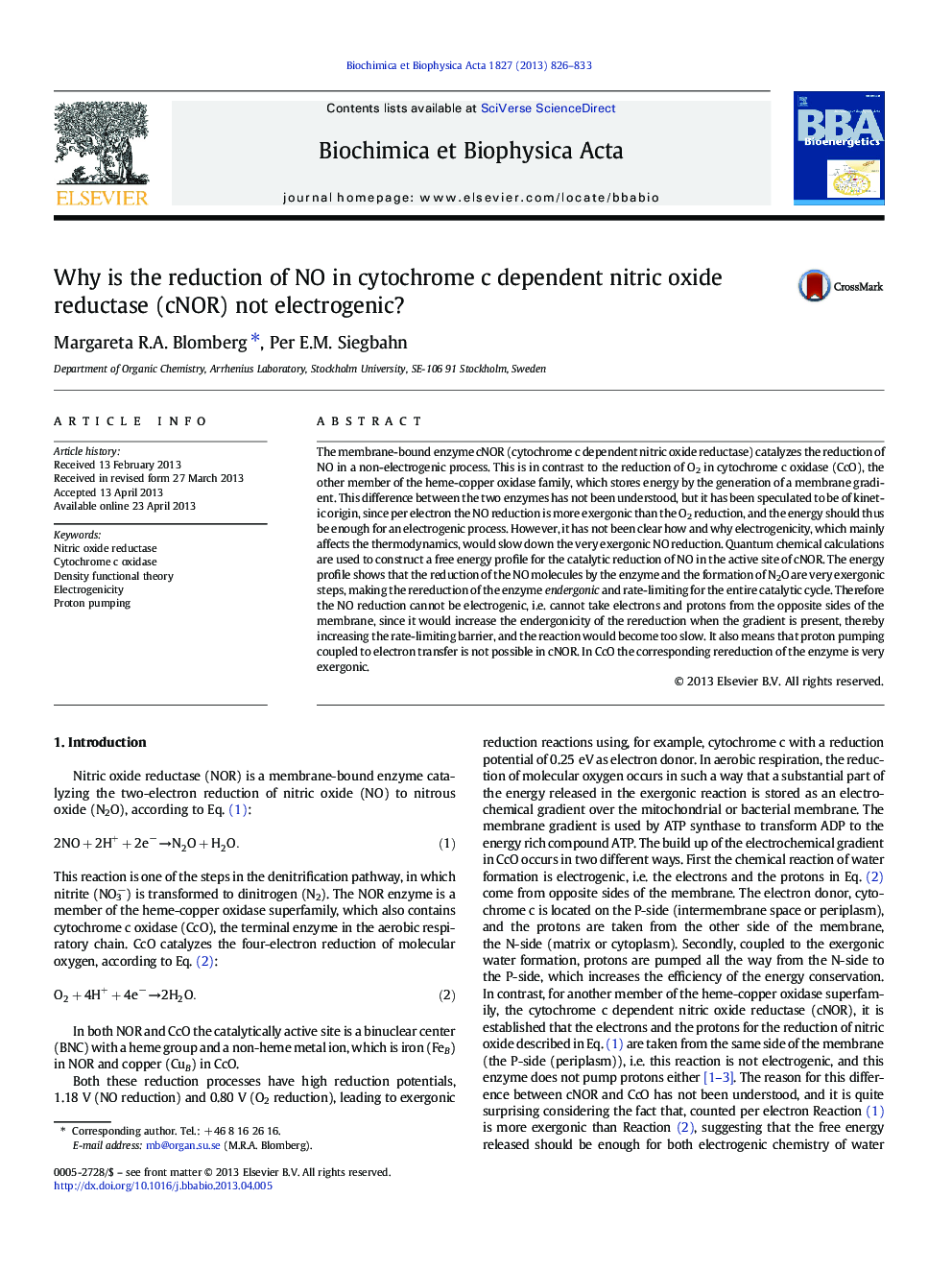| کد مقاله | کد نشریه | سال انتشار | مقاله انگلیسی | نسخه تمام متن |
|---|---|---|---|---|
| 1942222 | 1052595 | 2013 | 8 صفحه PDF | دانلود رایگان |

• N2O formation from two NO molecules in nitric oxide reductase is very exergonic.
• Rereduction of the enzyme is endergonic and rate limiting.
• Electrogenic reaction would increase the endergonicity when the gradient is present.
• Electrogenicity raises the rate limiting barrier and makes the reaction too slow.
• The conclusions are based on results from quantum chemical calculations.
The membrane-bound enzyme cNOR (cytochrome c dependent nitric oxide reductase) catalyzes the reduction of NO in a non-electrogenic process. This is in contrast to the reduction of O2 in cytochrome c oxidase (CcO), the other member of the heme-copper oxidase family, which stores energy by the generation of a membrane gradient. This difference between the two enzymes has not been understood, but it has been speculated to be of kinetic origin, since per electron the NO reduction is more exergonic than the O2 reduction, and the energy should thus be enough for an electrogenic process. However, it has not been clear how and why electrogenicity, which mainly affects the thermodynamics, would slow down the very exergonic NO reduction. Quantum chemical calculations are used to construct a free energy profile for the catalytic reduction of NO in the active site of cNOR. The energy profile shows that the reduction of the NO molecules by the enzyme and the formation of N2O are very exergonic steps, making the rereduction of the enzyme endergonic and rate-limiting for the entire catalytic cycle. Therefore the NO reduction cannot be electrogenic, i.e. cannot take electrons and protons from the opposite sides of the membrane, since it would increase the endergonicity of the rereduction when the gradient is present, thereby increasing the rate-limiting barrier, and the reaction would become too slow. It also means that proton pumping coupled to electron transfer is not possible in cNOR. In CcO the corresponding rereduction of the enzyme is very exergonic.
Journal: Biochimica et Biophysica Acta (BBA) - Bioenergetics - Volume 1827, Issue 7, July 2013, Pages 826–833